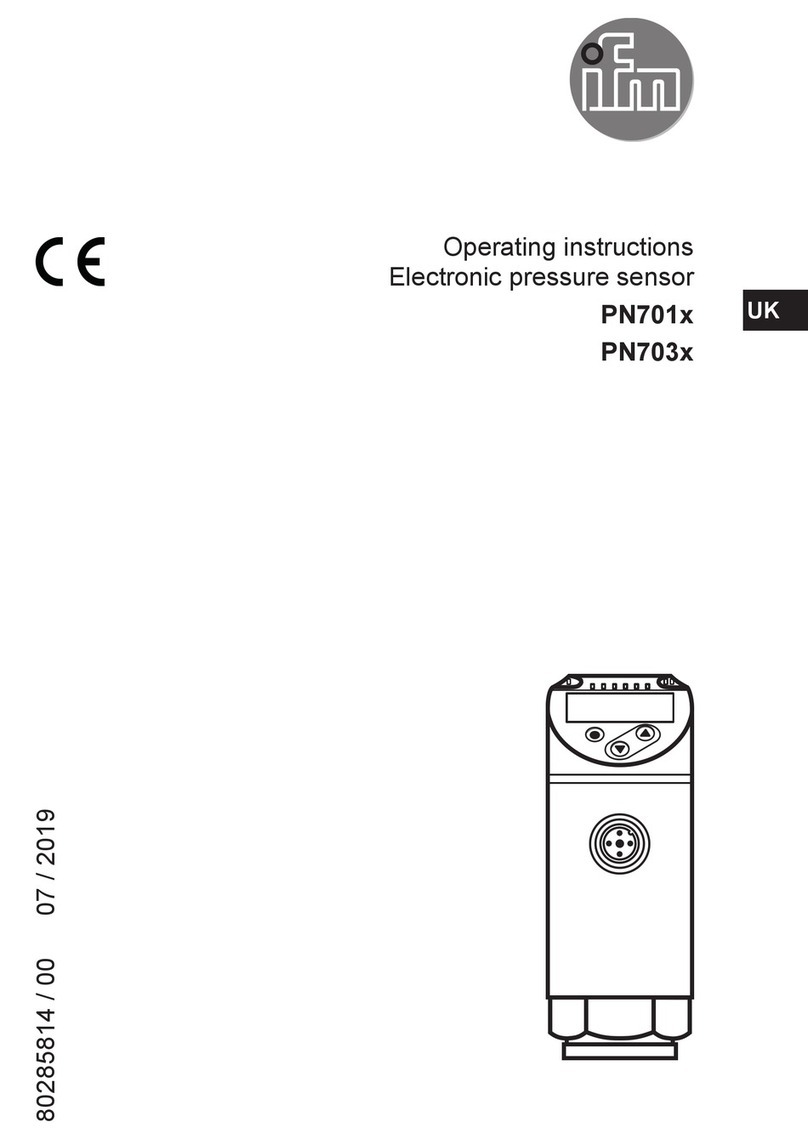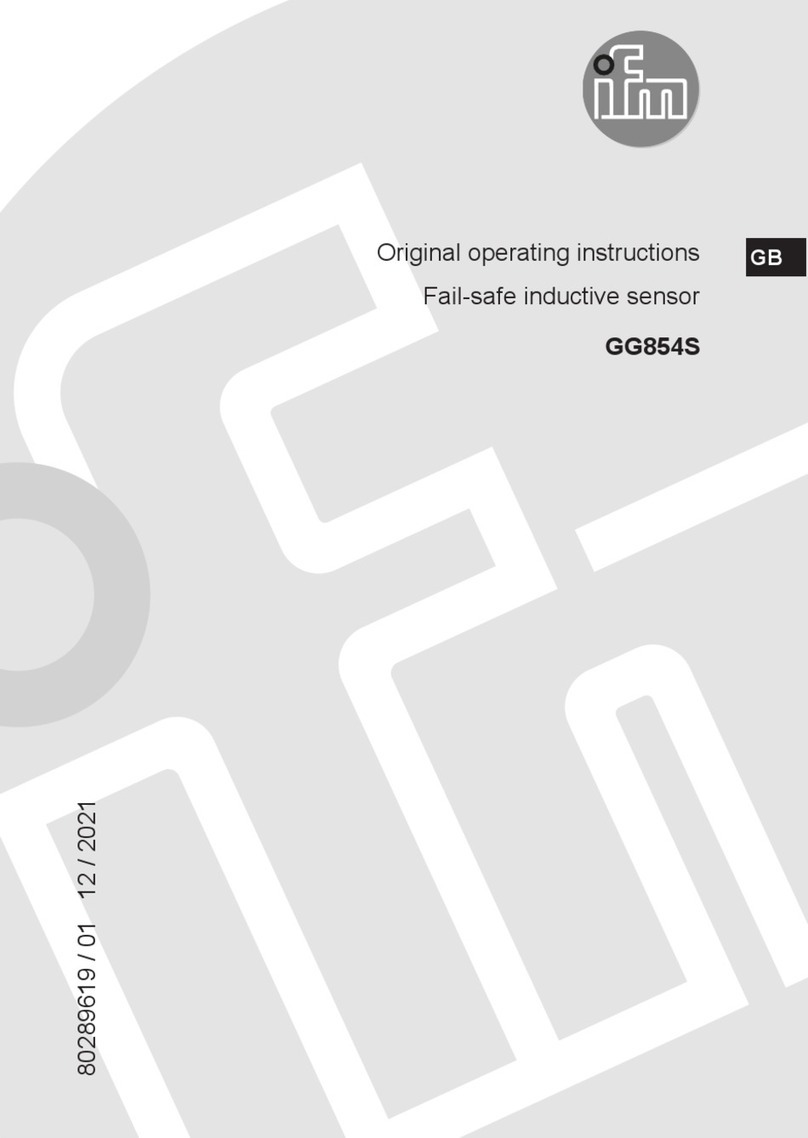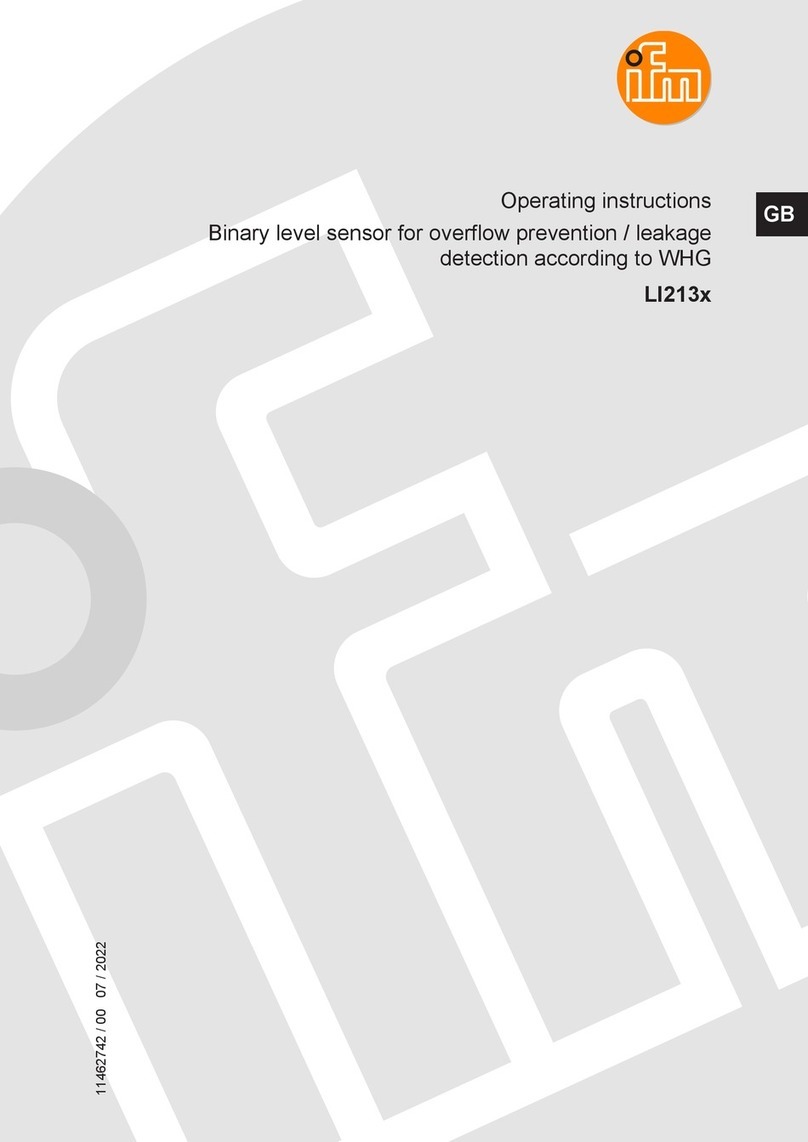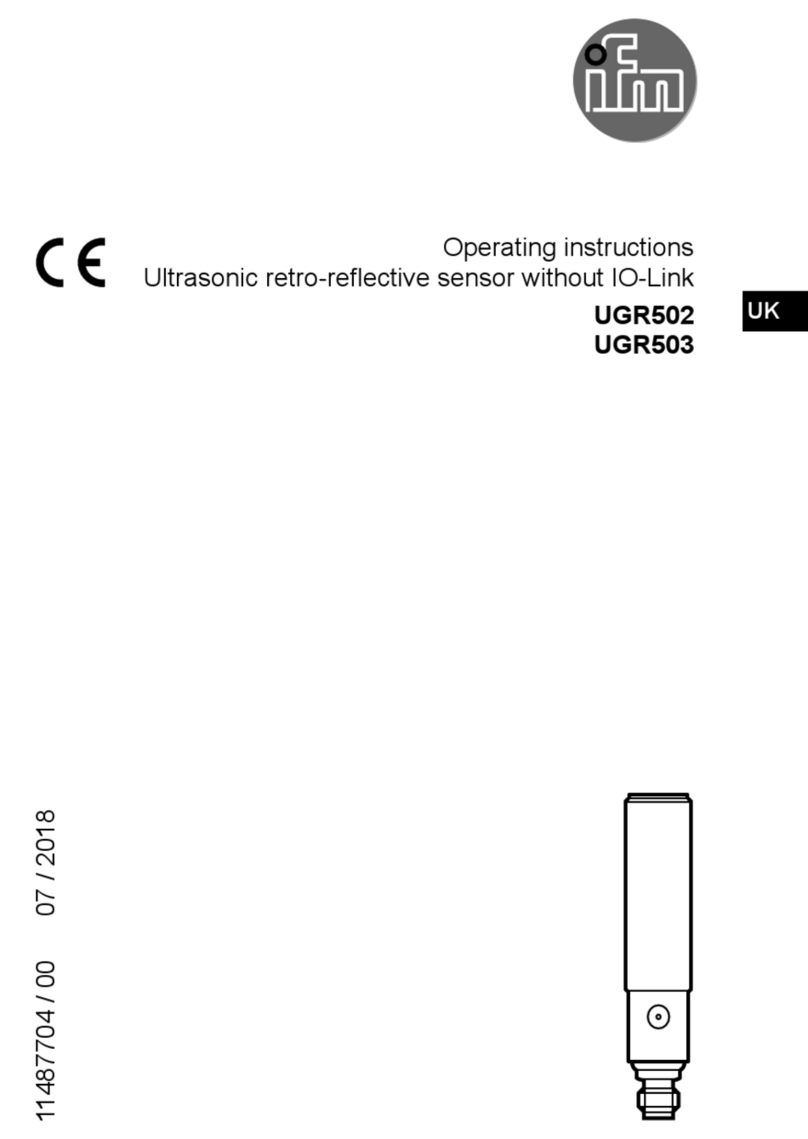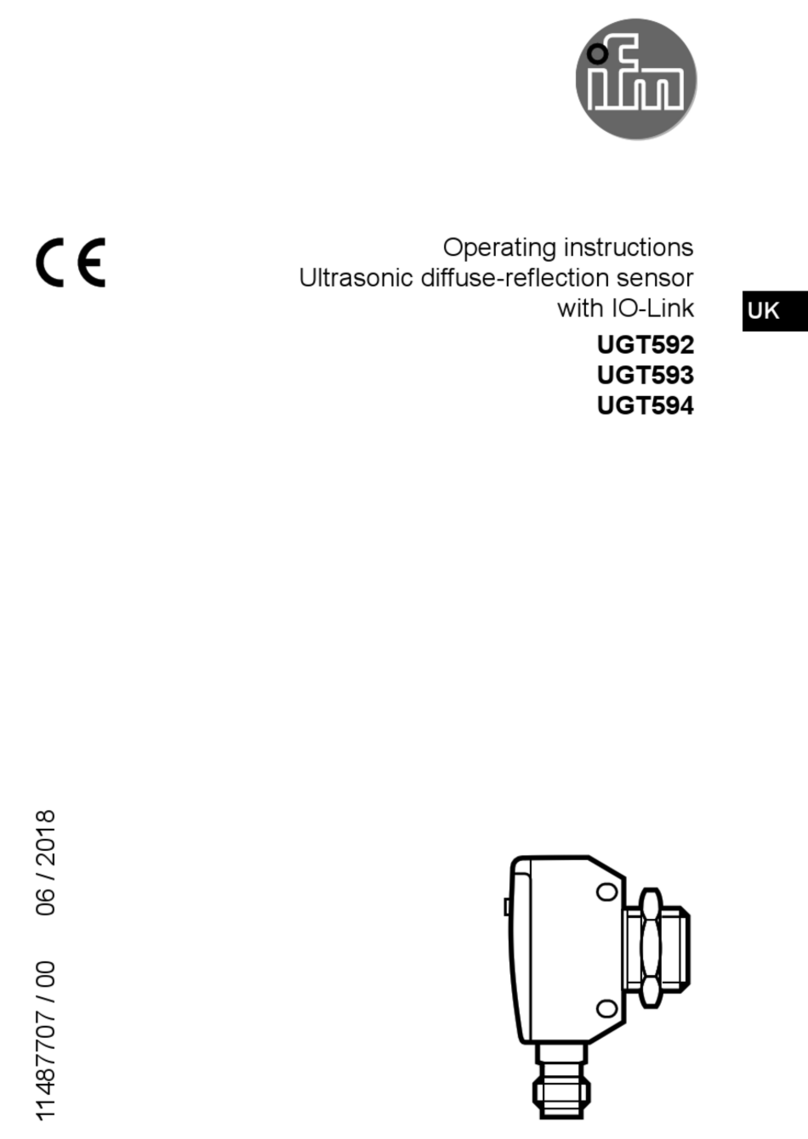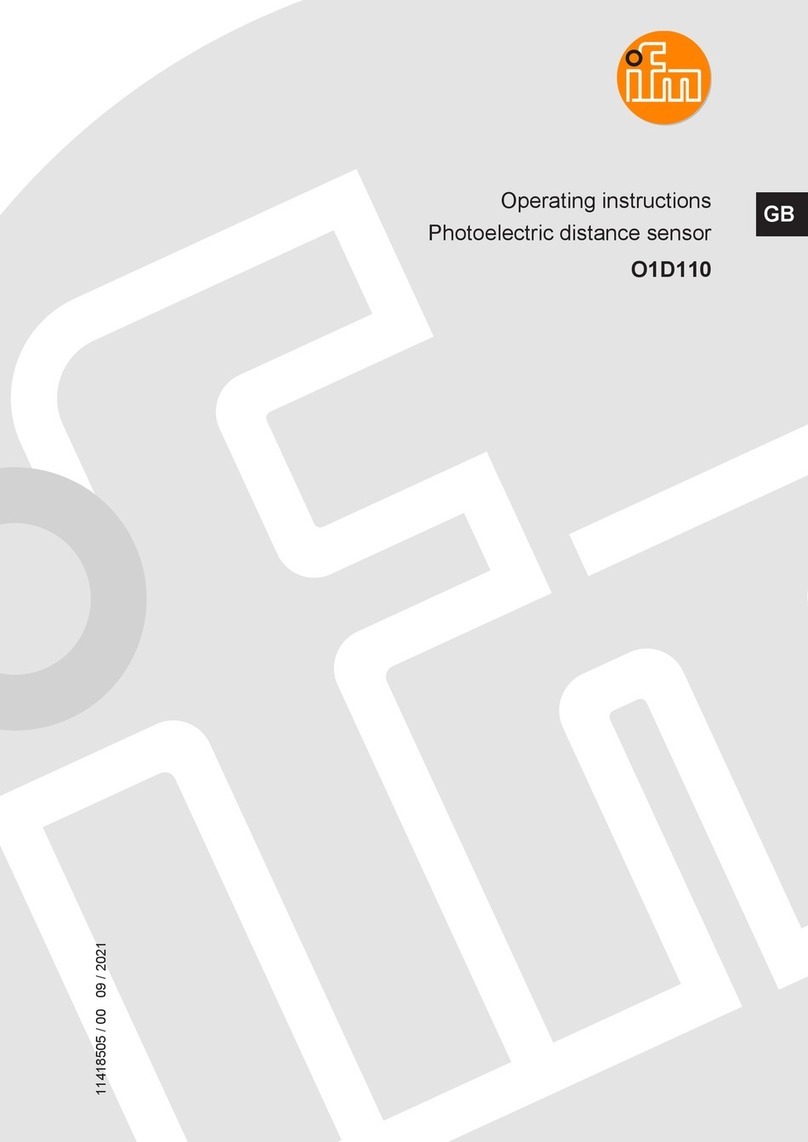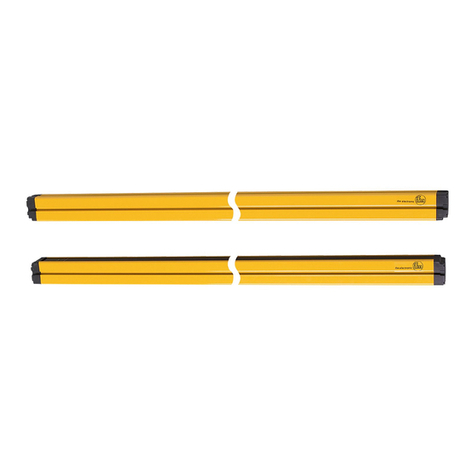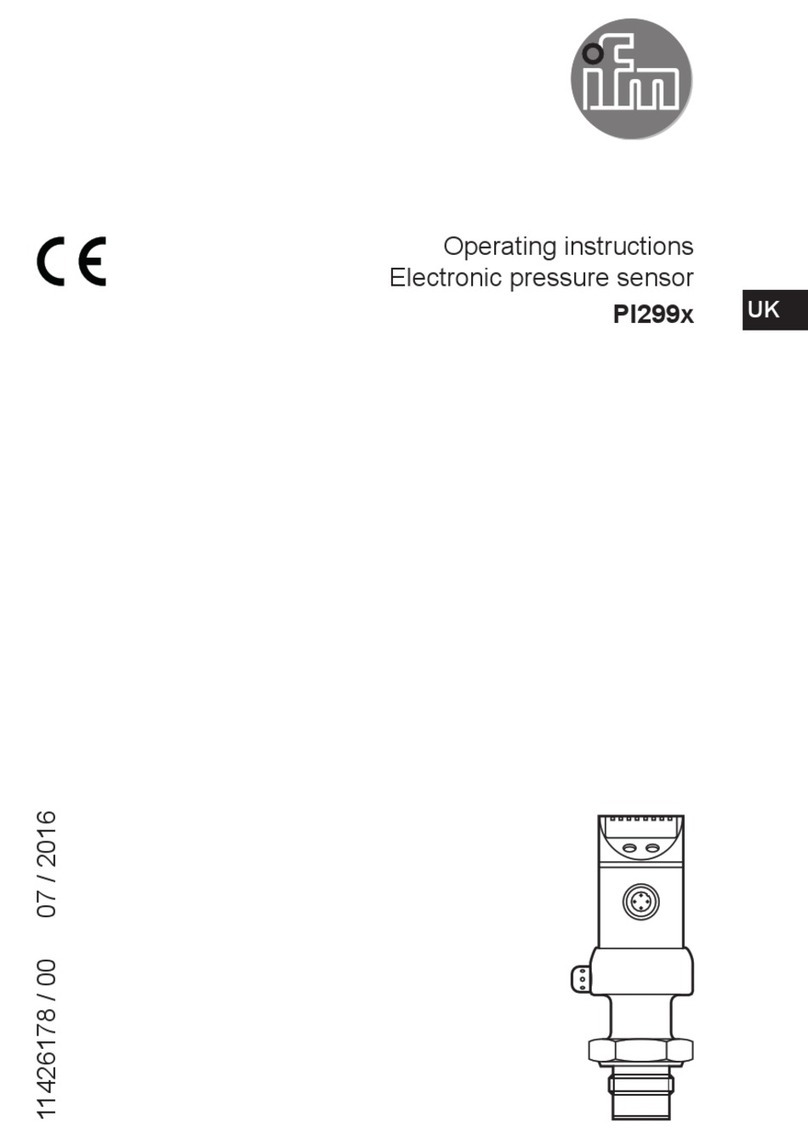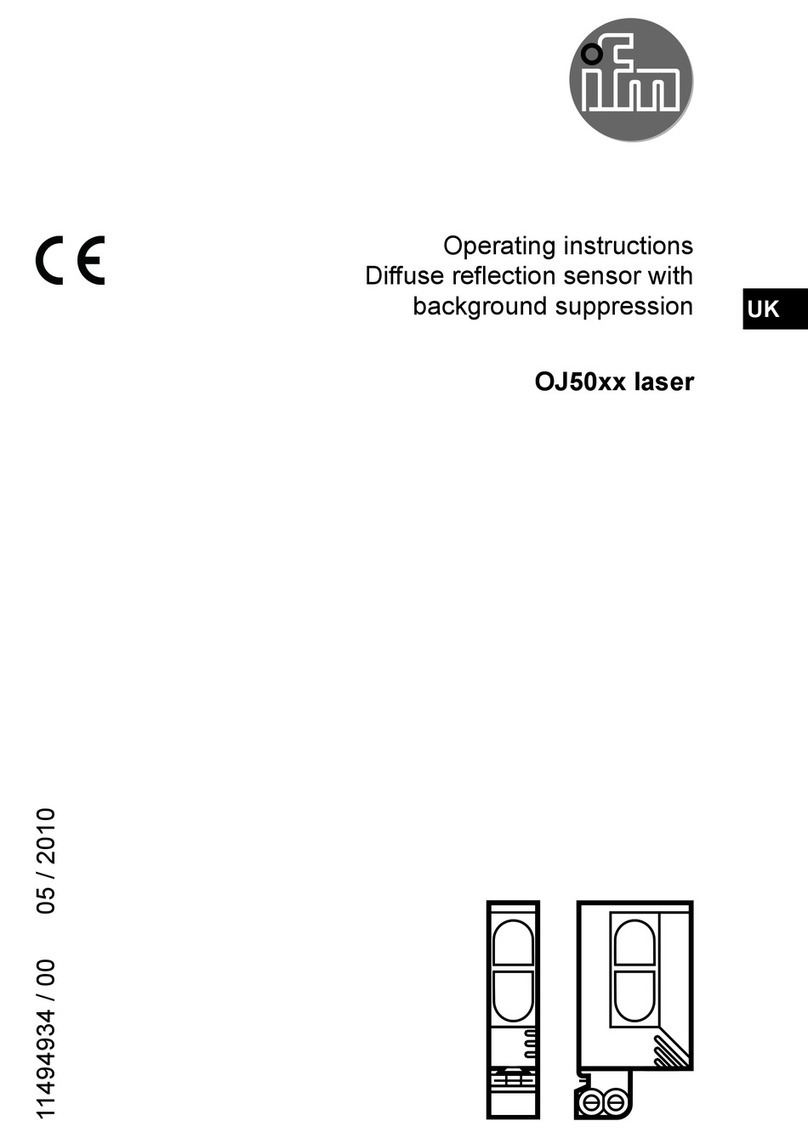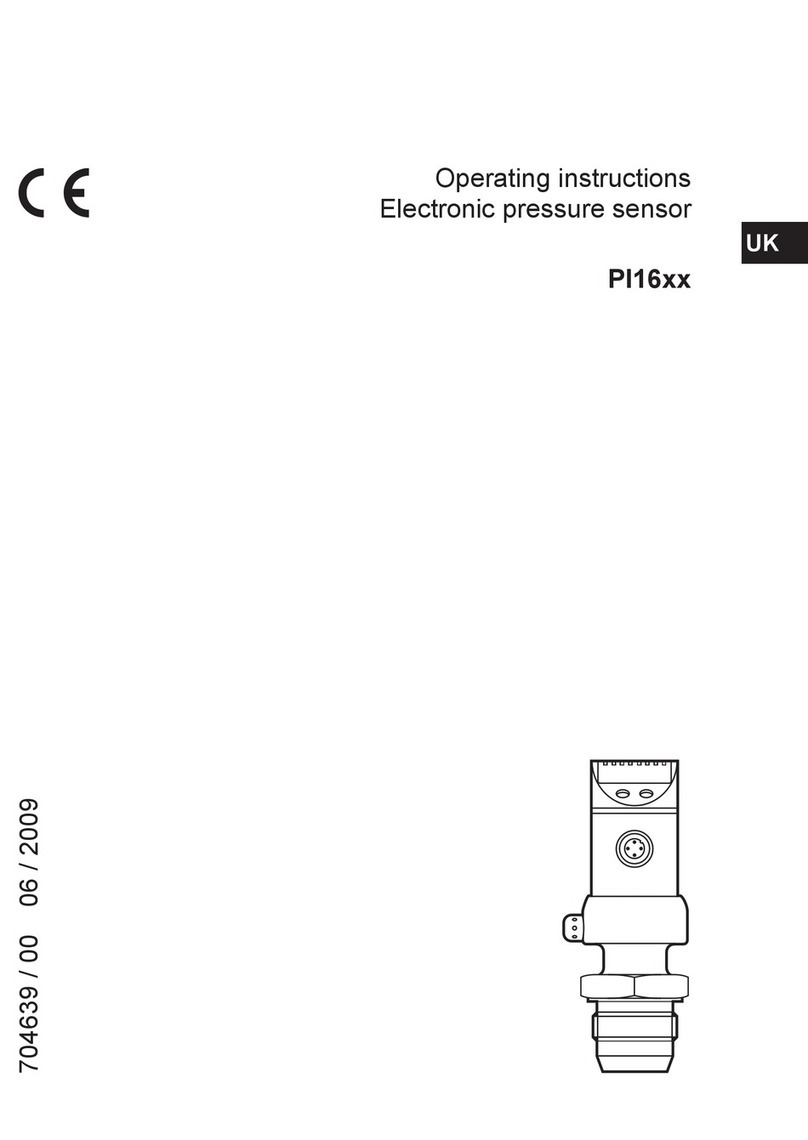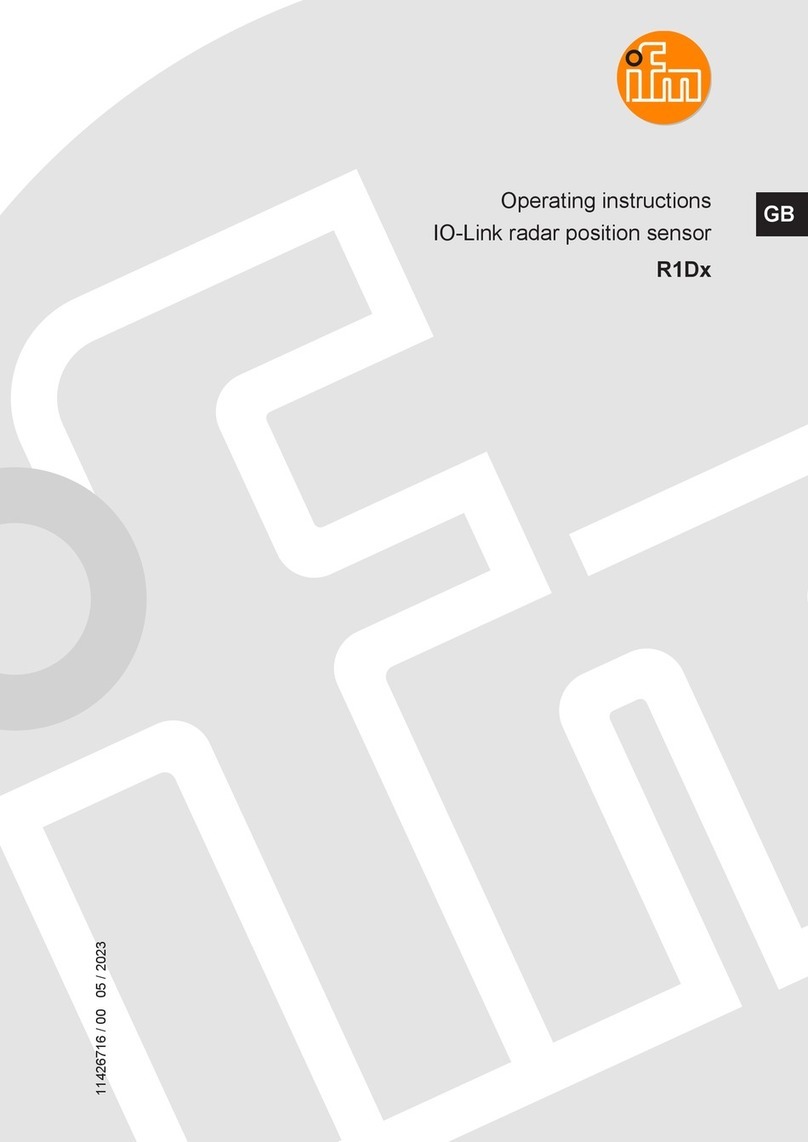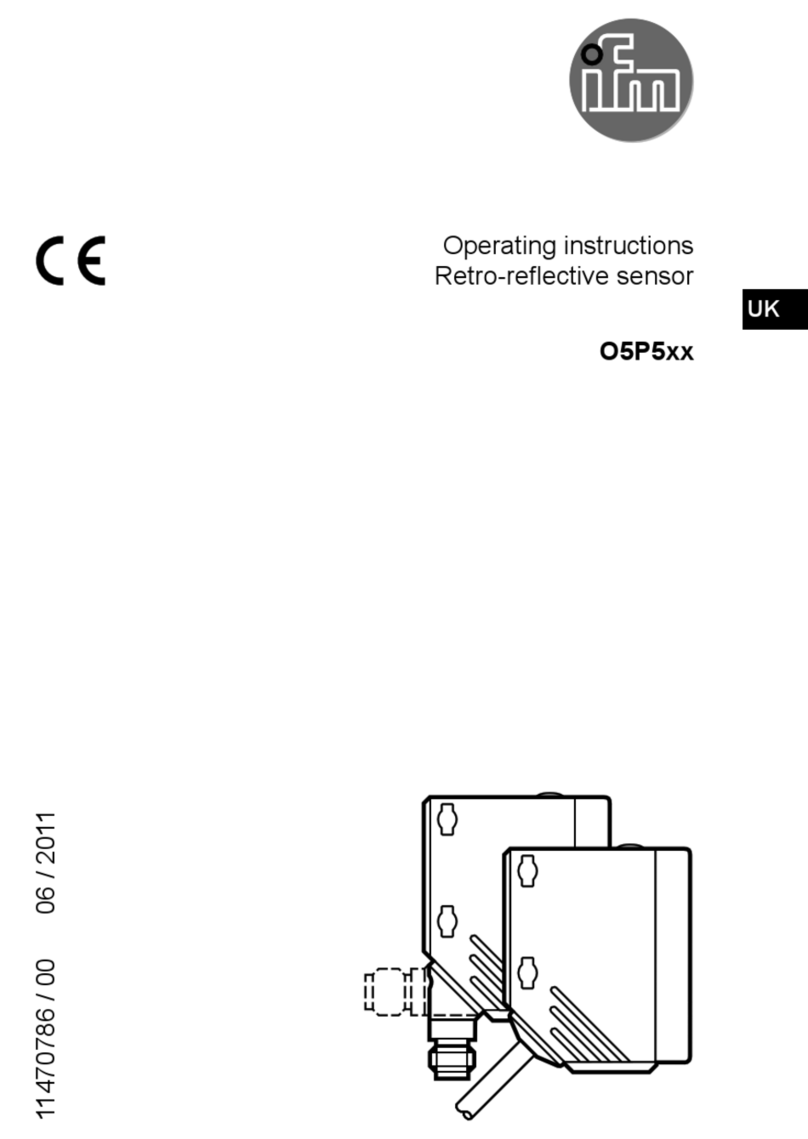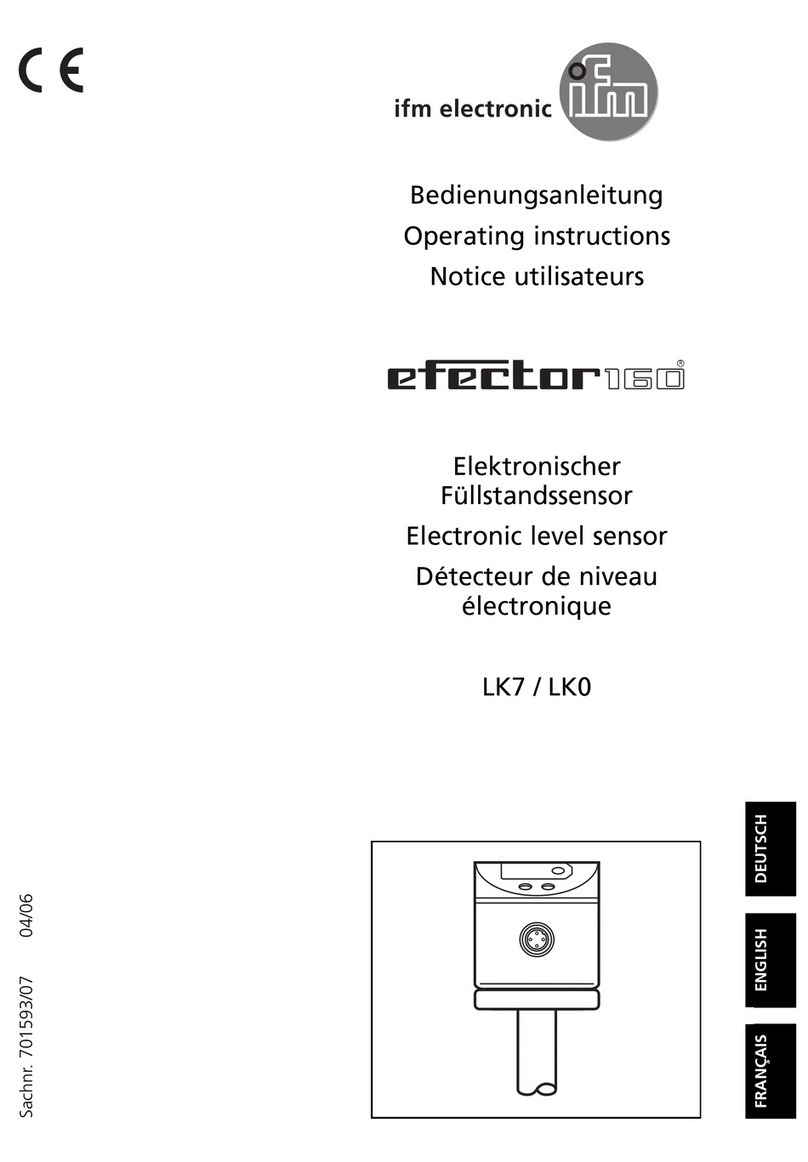
OPD101
2
Contents
1 Preliminary note.............................................................. 4
1.1 Symbols used........................................................... 4
1.2 Warnings used.......................................................... 4
2 Safety instructions............................................................ 5
3 Intended use ................................................................ 6
3.1 General description ...................................................... 6
3.1.1 Teaching and height profile............................................. 6
3.1.2 Normal operation..................................................... 7
3.2 Interpretation of the matching value . . . . . . . . . . . . . . . . . . . . . . . . . . . . . . . . . . . . . . . . . . 7
3.2.1 Fluctuation of the matching value . . . . . . . . . . . . . . . . . . . . . . . . . . . . . . . . . . . . . . . . 8
3.3 Profile properties ........................................................ 9
3.4 Applications ............................................................ 9
4 Function.................................................................... 10
4.1 Operating modes........................................................ 10
4.1.1 Switching mode...................................................... 10
4.1.2 Operation with IO-Link master........................................... 10
4.1.3 Operation with the “Vision Assistant“ parameter setting software and an IO-Link
master.............................................................
10
5 Installation .................................................................. 12
5.1 Installation conditions..................................................... 12
5.2 Installation instructions.................................................... 12
5.2.1 Lateral inclination .................................................... 12
5.2.2 Front inclination...................................................... 13
5.2.3 Saturation and signal loss.............................................. 13
5.2.4 Avoidance of multiple reflections . . . . . . . . . . . . . . . . . . . . . . . . . . . . . . . . . . . . . . . . . 14
5.2.5 Avoidance of soiling and ambient light . . . . . . . . . . . . . . . . . . . . . . . . . . . . . . . . . . . . 14
6 Electrical connection .......................................................... 15
6.1 Operation with IO-Link master.............................................. 15
7 Operating and display elements.................................................. 16
8 Set-up...................................................................... 17
8.1 “Guided Teach” / teaching of reference profiles . . . . . . . . . . . . . . . . . . . . . . . . . . . . . . . . . 18
8.1.1 Language selection................................................... 18
8.1.2 Teaching an object ................................................... 18
8.1.3 Set ROI............................................................ 19
8.1.4 Set the position of the reference profile. . . . . . . . . . . . . . . . . . . . . . . . . . . . . . . . . . . . 20
8.1.5 Switching threshold................................................... 21
8.1.6 Saving the reference profile............................................. 21
8.1.7 Finishing the teach process............................................. 22
8.1.8 Run mode.......................................................... 22
9 Menu ...................................................................... 23
9.1 Basic functions.......................................................... 23
9.2 Extended functions....................................................... 24
10 Operating modes............................................................. 27
10.1 Continuous mode........................................................ 27
10.2 Triggered mode ......................................................... 27
11 Parameter setting............................................................. 29
11.1 Parameter level basic functions............................................. 29
11.1.1 [Adjust threshold]..................................................... 29
11.1.2 [ROI marking] ....................................................... 29
11.1.3 [Profile properties].................................................... 29
11.1.4 [Profile manager]..................................................... 29
11.1.5 [Extended functions] .................................................. 30
11.1.6 [Back] ............................................................. 30
11.2 Parameter level extended functions . . . . . . . . . . . . . . . . . . . . . . . . . . . . . . . . . . . . . . . . . . 30
11.2.1 [Factory setting]...................................................... 30






